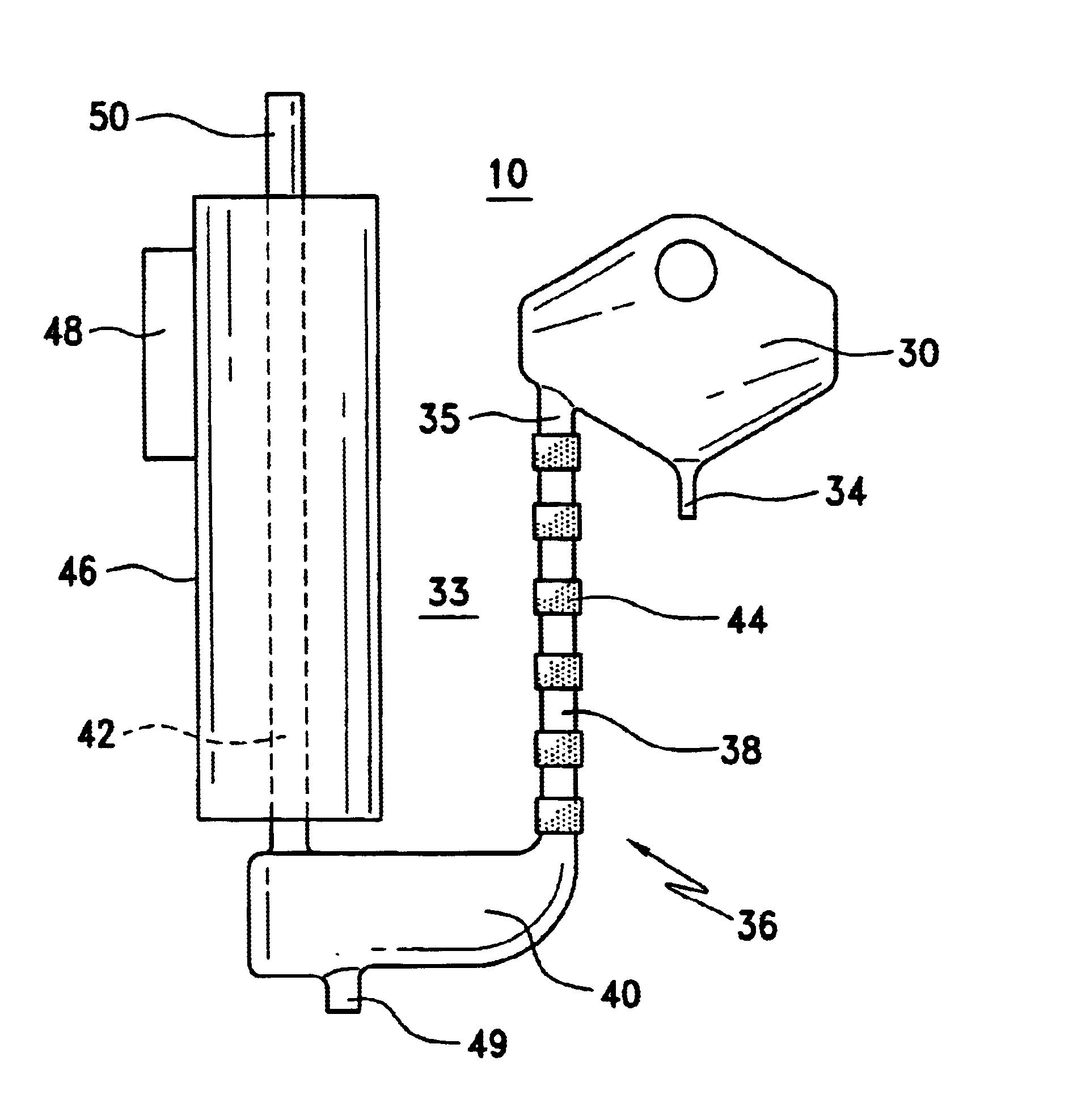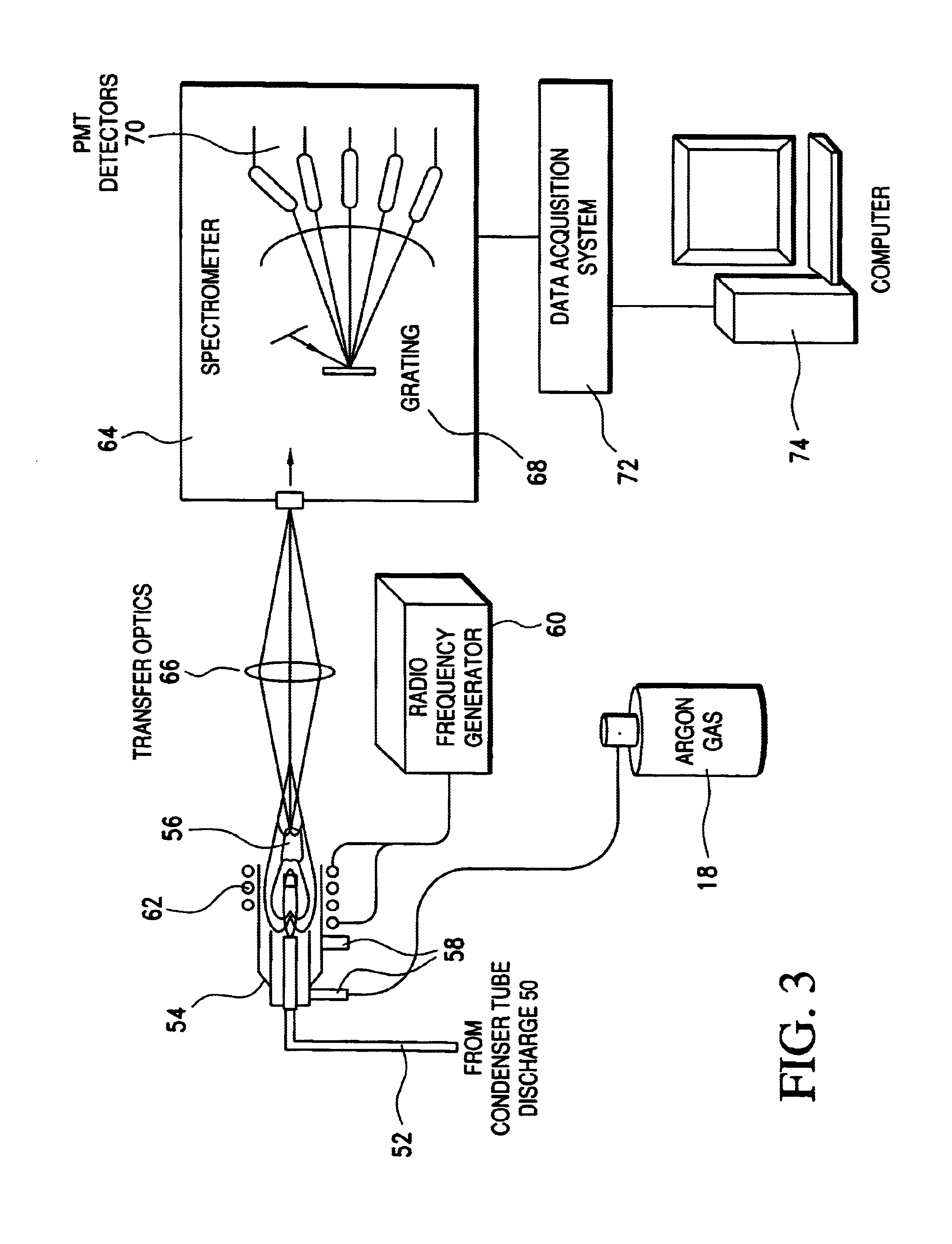Spectrometer sample generating and injecting system using a microliter nebulizer
a nebulizer and microliter technology, applied in the field of spectrometer samples, can solve the problems of increasing the efficiency of the nebulizer disclosed in the parent application 456, the measurement sensitivity of the spectrometer cannot be fully appreciated, and the plasma temperature cannot be fully appreciated when used with the plasma emission spectrometer, etc., to achieve enhanced sample signal strength, reduce solvent loading, and high efficiency
- Summary
- Abstract
- Description
- Claims
- Application Information
AI Technical Summary
Benefits of technology
Problems solved by technology
Method used
Image
Examples
Embodiment Construction
The present invention relates not only to a unique low flow rate, high efficiency nebulizer that is particularly suited for generating atomized samples for use in a plasma emission spectrometer, but also to an overall spectrometer based sample analysis system that employs a unique sample generating and injecting system, which in turn employs the unique nebulizer. A detailed discussion of each of these systems and elements follows.
With reference first to FIGS. 1 and 2, a sample generating and injecting system 10 is illustrated that is constructed in accordance with the preferred embodiment for generating and injecting atomized samples into a plasma emission spectrometer. The system 10 combined with a spectrometer system 12 illustrated in FIG. 3 form the overall spectrometer based sample analysis system. The sample generating and injecting system 10 is capable of producing an aerosol comprised of small, evenly sized liquid particles in a carrier gas. Liquid samples may include, for ex...
PUM
| Property | Measurement | Unit |
|---|---|---|
| outer diameter | aaaaa | aaaaa |
| inner thickness | aaaaa | aaaaa |
| diameters | aaaaa | aaaaa |
Abstract
Description
Claims
Application Information
 Login to View More
Login to View More - R&D
- Intellectual Property
- Life Sciences
- Materials
- Tech Scout
- Unparalleled Data Quality
- Higher Quality Content
- 60% Fewer Hallucinations
Browse by: Latest US Patents, China's latest patents, Technical Efficacy Thesaurus, Application Domain, Technology Topic, Popular Technical Reports.
© 2025 PatSnap. All rights reserved.Legal|Privacy policy|Modern Slavery Act Transparency Statement|Sitemap|About US| Contact US: help@patsnap.com



